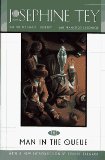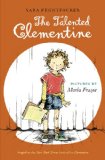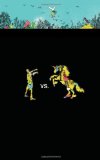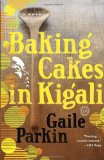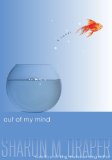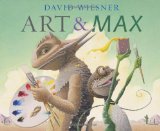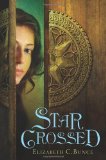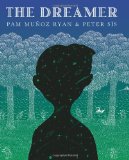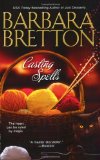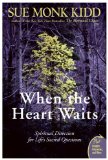 When the Heart Waits
When the Heart Waits
Spiritual Direction for Life’s Sacred Questions
by Sue Monk Kidd
HarperSanFrancisco, 1990. 217 pages.
Starred Review
Here’s another book by a woman exploring the deep questions and issues of facing midlife. Those always resonate with me. This one, with the theme of waiting, of slow growth, seemed particularly apt.
She uses the image of spinning a cocoon and having radical transformation from a caterpillar to a butterfly. It takes time. And when the transformation has been made, even unfurling your new wings is difficult.
Here are some passages I especially liked, to give you a taste of the wisdom in this book:
“When it comes to religion today, we tend to be long on butterflies and short on cocoons. Somehow we’re going to have to relearn that the deep things of God don’t come suddenly. It’s as if we imagine that all of our spiritual growth potential is dehydrated contents to which we need only add some holy water to make it instantly and easily appear.
“I received a letter recently from someone who was feeling impatient about taking the long way round. She wrote, ‘Pole vaulting is so much more alluring than crawling.'”
“Most of us Christians don’t know how to wait in pain — at least not in the contemplative, creative way that opens us to newness and growth. We’re told to “turn it over to Jesus” and — presto! — things should be okay.
“But inside things usually aren’t okay. So on top of everything else, we feel guilty because obviously we didn’t really turn our pain over or else it wouldn’t still be with us. Or we decide that God wasn’t listening and can’t be trusted to deliver on divine promises.
“How did we ever get the idea that God would supply us on demand with quick fixes, that God is merely a rescuer and not a midwife?”
“If you want to be impressed, note how often God’s people seem to be waiting….
“I came to the parable Jesus told about the ten maidens waiting for the bridegroom…. I’d always thought that the point of the story was that we should be prepared. But in my reading after the retreat, it seemed to be just as much about waiting. Waiting through the dark night. The idea is that waiting precedes celebration. If you don’t show up prepared to wait, you may miss the transcendent when it happens.
“Most stunning to me was the picture I began to get of God waiting. The parable of the prodigal son would be more aptly named the parable of the waiting father. It tells us much more about God than anything else — a God who watches and waits with a full heart for us to make our homecoming.”
“Shifting from a self-centered focus to a more God-centered focus is terribly hard. I think we’ve gone wrong by assuming that such a radical movement can be achieved simply by setting our jaw and saying one or two prayers of relinquishment.
“Letting go isn’t one step but many. It’s a winding, spiraling process that happens on deep levels. And we must begin at the beginning: by confronting our ambivalence.”
“Looking back, I’m aware of several experiences that sifted together to bring me quietly to the place of letting go. They had the effect of slowly and gently uncurling my grip, finger by finger.”
She takes us through her midlife journey, including many painful moments. But then comes the time of unfurling the new wings:
“When the time is right, the cocooned soul begins to emerge. Waiting turns golden. Newness unfurls. It’s a time of pure, unmitigated wonder. Yet as we enter the passage of emergence, we need to remember that new life comes slowly, awkwardly, on wobbly wings.
“I waited many long months before I felt newness begin to form, and many more before it began to unfold in my life. Gradually — oh, so gradually — my waiting season came to an end. The pain began to diminish bit by bit, as if it had peaked and now was giving way to something new. Many of the questions I’d lived with began to sprout little seeds of insight. Light trickled in. A new vision and way of life began to take shape not only in my head but in my heart and soul as well. It was as if I’d discovered a new room inside myself — a wider, more expansive place than I’d known before, but a room that had been there all along.”
This book will uplift and encourage anyone going through a similar journey. She offers us Hope:
“Hope for you and me and the journeys we undertake. Hope that we would trust our waiting hearts enough to risk entering them, that we would listen for the Voice that bids us come to the edge, and that we would welcome the gentle push of God, who is both our wings and the wind that bears them up.”
Buy from Amazon.com
Find this review on Sonderbooks at: www.sonderbooks.com/Nonfiction/when_the_heart_waits.html
Disclosure: I am an Amazon Affiliate, and will earn a small percentage if you order a book on Amazon after clicking through from my site.
Source: This review is based on a library book from the Fairfax County Public Library.
